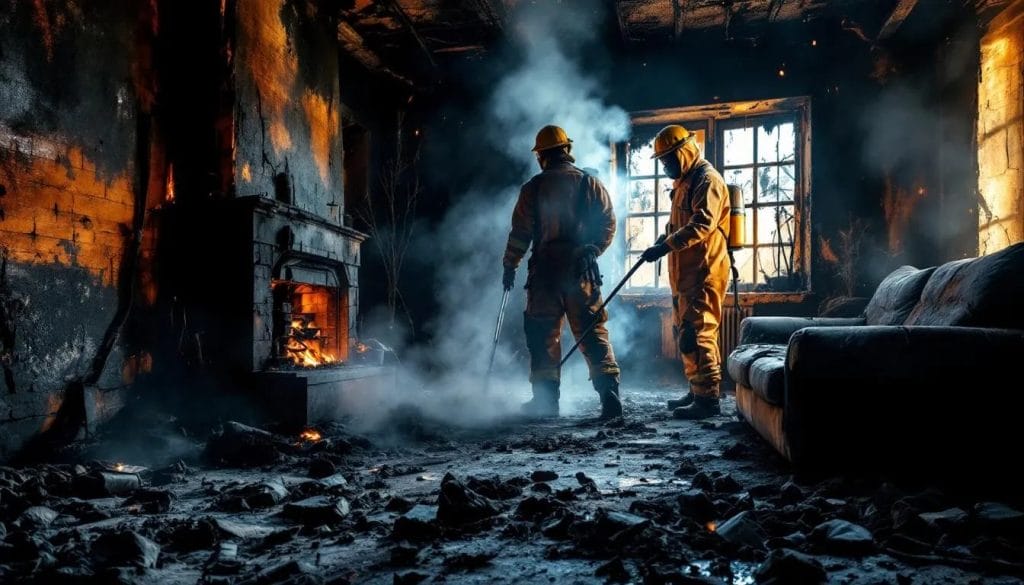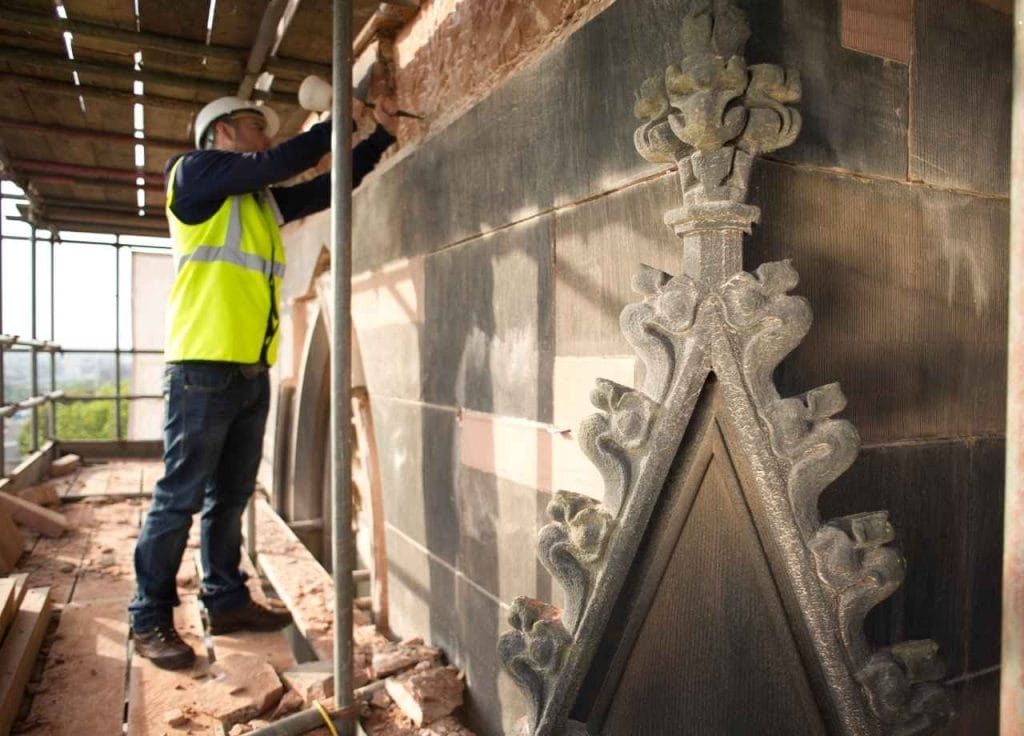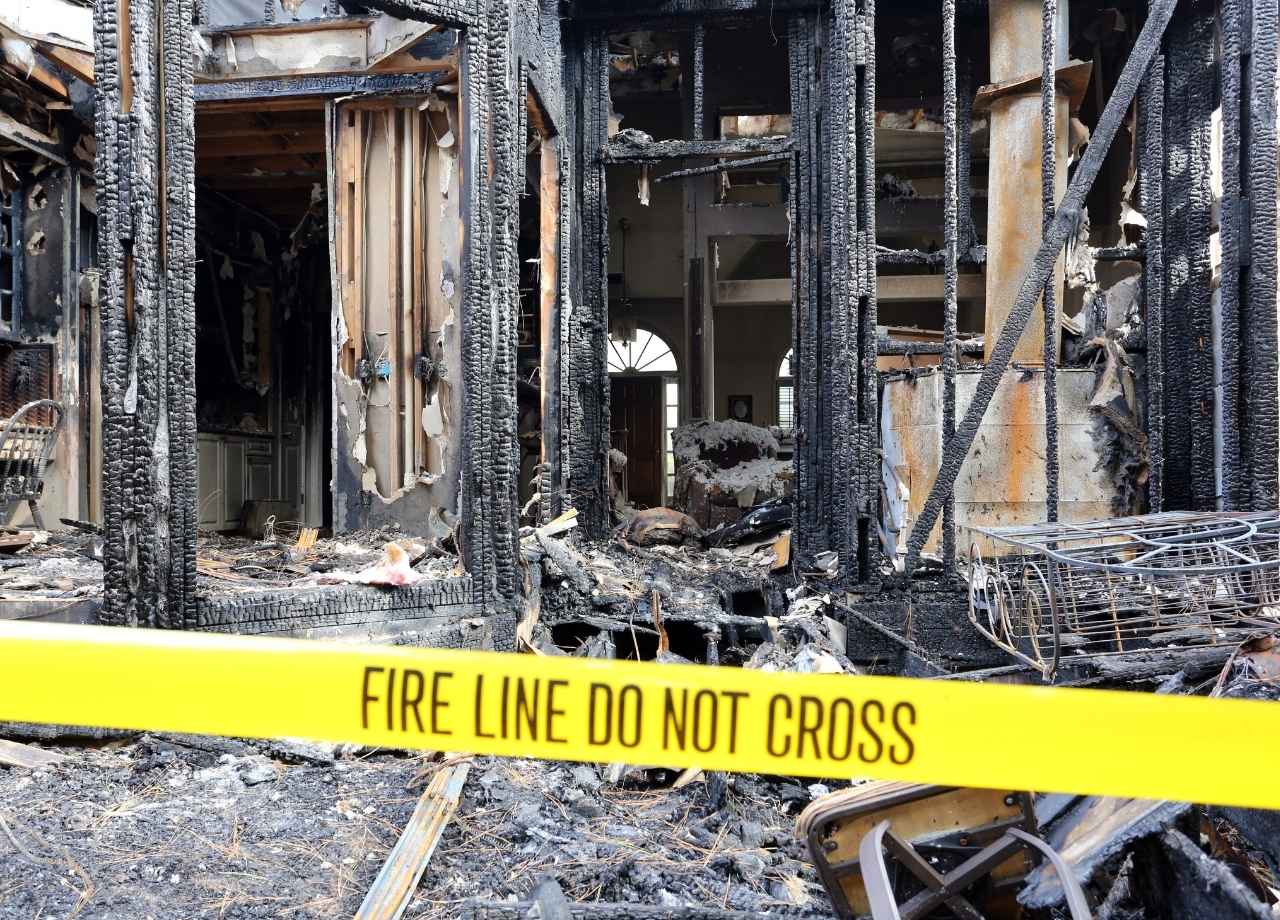When a fire strikes a home or business, the visible flames are only the beginning of the damage. Once the fire trucks leave, property owners are left with a building that is unsafe, contaminated, and filled with lingering hazards. This stage is where professional after-fire cleaning and restoration becomes critical. At First Coast Contracting, our team has decades of combined experience in restoring homes in Jacksonville, St. Augustine, and surrounding areas, helping families and business owners move forward after fire disasters.
Recovering from a fire is not as simple as sweeping up debris or repainting walls. Fire leaves behind soot, smoke particles, water damage, and hidden structural concerns that must be carefully addressed before a home or building can be safe again. Below, we’ll break down the process and explain what really happens after the flames are out.
Table of Contents
The Initial Safety and Assessment Phase
The first step after any fire is making sure the property is safe to enter. Fire weakens structures, damages electrical systems, and leaves behind toxic residues. Professionals inspect the building for signs of instability, compromised roofing, weakened beams, and hazards like exposed wiring or gas leaks.
A detailed assessment is performed to document the extent of the fire, smoke, and water damage. This information is not only critical for the restoration team—it also becomes part of the insurance process. Many restoration companies work directly with insurance adjusters, helping homeowners receive fair coverage for repairs.

During this stage, affected contents are also evaluated. Items like furniture, clothing, appliances, and personal belongings are sorted into what can be restored and what must be replaced.
Securing the Property
Fire-damaged properties are vulnerable to further damage from weather and potential vandalism. Boarding up windows, tarping roofs, and sealing off openings prevents additional loss. This step is about controlling the environment before any cleaning or restoration begins.
Temporary power and lighting may also be installed so crews can work safely in the building. Once the property is secure, cleaning and remediation can begin.
Smoke and Soot Removal
Smoke and soot are two of the most damaging byproducts of a fire. They don’t just settle on surfaces—they penetrate walls, ceilings, HVAC systems, and even behind cabinets. Left untreated, they cause permanent staining, lingering odors, and respiratory hazards.
Specialized vacuums and filtration systems are used to remove loose soot. Then, technicians apply cleaning agents tailored to the surface material. For example, cleaning soot from drywall requires a different process than cleaning it from brick or metal.
Odor removal is another major task. Standard cleaning products cannot neutralize the microscopic smoke particles that embed themselves into materials. Professional crews use ozone treatments, thermal fogging, or hydroxyl generators to break down odor-causing molecules and restore fresh air quality inside the home.
Handling Water and Mold After Firefighting
Most fire damage is paired with water damage. Firefighters use thousands of gallons of water to extinguish flames, leaving floors, walls, and ceilings soaked. This creates the perfect environment for mold growth if not handled immediately.
After-fire cleaning always includes water extraction, industrial dehumidification, and thorough drying of structural elements. Moisture meters and thermal imaging cameras help crews find hidden pockets of water inside walls or under flooring.
If mold has already started forming, remediation specialists will isolate the affected areas, remove contaminated materials, and apply antimicrobial treatments to prevent regrowth. Managing moisture quickly is essential to stopping long-term structural decay.
Structural Cleaning and Repairs
Once the property is dry and soot-free, attention turns to the building itself. Fire weakens wooden framing, warps metal supports, and cracks masonry. During structural cleaning, all compromised materials are removed and replaced.
Surfaces like studs, subfloors, and concrete are often sealed with odor-blocking primers to lock in any remaining smoke residue. Walls and ceilings are then rebuilt, new insulation installed, and interior finishes restored.
This is also the stage where homeowners can decide if they want to take the opportunity for remodeling. Many fire restoration projects naturally blend into remodeling, giving families a chance to upgrade kitchens, bathrooms, or layouts as part of the rebuild.
Cleaning and Restoring Contents
Fire doesn’t just damage the structure—it also impacts everything inside it. Contents cleaning is a highly specialized part of after-fire services. Items that can be restored are carefully packed, cleaned, deodorized, and stored off-site until the home is ready for reoccupation.
Techniques vary depending on the material. Soft goods like clothing, bedding, and curtains are treated with specialized laundry processes. Electronics are carefully dried, cleaned, and tested. Artwork, heirlooms, and documents often undergo unique treatments such as freeze-drying or ultrasonic cleaning.
For many homeowners, contents restoration is just as important as rebuilding the house. Saving personal belongings helps preserve a sense of normalcy after a disaster.
HVAC and Air System Decontamination
Smoke and soot often infiltrate ductwork and HVAC systems, spreading contamination throughout the property. Cleaning air ducts, replacing filters, and sanitizing ventilation systems are essential to prevent recontamination of cleaned areas.
Without this step, even freshly restored rooms can develop lingering odors and unhealthy indoor air quality. Professional-grade air scrubbers are typically used throughout the restoration process to continually filter the air.
Documentation and Working With Insurance
Every step of fire cleaning and restoration requires careful documentation. Crews take photographs, keep records of damaged and restored items, and provide detailed reports. These records are shared with insurance adjusters to ensure claims are supported and properly covered.
Homeowners often underestimate how overwhelming the paperwork can be. Having a contractor that can coordinate directly with insurance companies takes a significant burden off families already coping with the stress of displacement.
Final Restoration and Return
The last stage is rebuilding the home or business to pre-fire condition—or better. This includes interior finishing, flooring, cabinetry, painting, and reinstalling appliances or fixtures. At this point, the property is not only structurally sound but also safe, clean, and comfortable for occupants to return.

Before homeowners move back in, a final walkthrough ensures all smoke odors are eliminated, air quality is restored, and every part of the structure meets safety standards. Only then is the fire truly “out” in the sense of being behind you.
Why Professional After-Fire Cleaning Matters
Trying to handle fire cleanup without professional support is dangerous and often ineffective. Soot and smoke damage continue to worsen over time, water damage can lead to hidden mold, and structural weaknesses may go unnoticed. Professional crews bring the equipment, training, and safety standards needed to restore a property fully.
The goal is not just to clean what’s visible but to return the property to a safe, healthy, and livable condition. Fires are traumatic, but with proper after-fire cleaning services, families and businesses can rebuild their lives with confidence.


